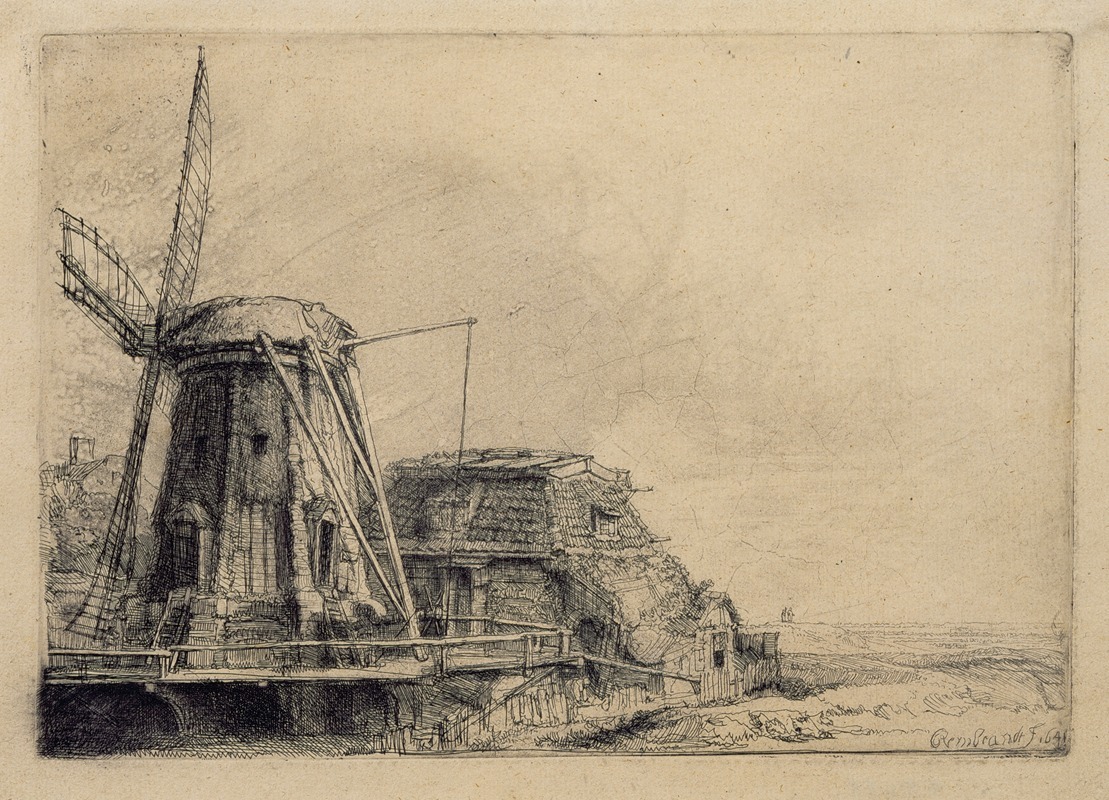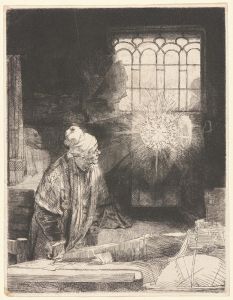
The Windmill
A hand-painted replica of Rembrandt van Rijn’s masterpiece The Windmill, meticulously crafted by professional artists to capture the true essence of the original. Each piece is created with museum-quality canvas and rare mineral pigments, carefully painted by experienced artists with delicate brushstrokes and rich, layered colors to perfectly recreate the texture of the original artwork. Unlike machine-printed reproductions, this hand-painted version brings the painting to life, infused with the artist’s emotions and skill in every stroke. Whether for personal collection or home decoration, it instantly elevates the artistic atmosphere of any space.
"The Windmill" is a painting by the renowned Dutch artist Rembrandt van Rijn. Created in 1641, this work is an oil painting on canvas and is one of the many masterpieces that highlight Rembrandt's exceptional skill in capturing light and shadow, as well as his ability to convey a sense of atmosphere and mood.
The painting depicts a windmill, a common and iconic feature of the Dutch landscape, which played a crucial role in the Netherlands' economy and daily life during the 17th century. Windmills were used for various purposes, including grinding grain, draining water from the land, and sawing wood. In "The Windmill," Rembrandt presents the structure in a dramatic and almost monumental manner, emphasizing its importance and presence within the landscape.
Rembrandt's use of light and shadow in this painting is particularly noteworthy. The windmill is bathed in a warm, golden light, which contrasts with the darker, more subdued tones of the surrounding landscape. This technique, known as chiaroscuro, is a hallmark of Rembrandt's style and serves to draw the viewer's attention to the central subject of the painting. The sky is depicted with a sense of movement and dynamism, with clouds that seem to be in constant flux, adding to the overall dramatic effect of the scene.
The composition of "The Windmill" is carefully balanced, with the windmill positioned slightly off-center, creating a sense of depth and perspective. The foreground features a small body of water, which reflects the windmill and adds to the painting's sense of tranquility and harmony. The use of reflections is another technique that Rembrandt often employed to enhance the realism and depth of his landscapes.
Rembrandt's attention to detail is evident in the meticulous rendering of the windmill's structure, from the wooden beams and sails to the stone base. This level of detail not only showcases Rembrandt's technical skill but also his deep appreciation for the subject matter. The painting captures a moment in time, with the windmill standing as a testament to the ingenuity and resilience of the Dutch people.
"The Windmill" is part of the collection of the National Gallery of Art in Washington, D.C. It is considered one of Rembrandt's significant contributions to landscape painting, a genre that he explored throughout his career, albeit less frequently than his portraits and biblical scenes. The painting offers a glimpse into the rural life of the Dutch Golden Age and reflects Rembrandt's ability to infuse even the most ordinary subjects with a sense of grandeur and significance.
In summary, "The Windmill" by Rembrandt van Rijn is a masterful example of the artist's landscape work, showcasing his skill in light, shadow, and composition. The painting remains an important piece within the National Gallery of Art's collection and continues to be admired for its beauty and historical significance.


















